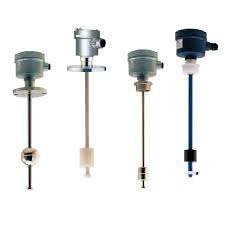A Magnetic float level switch detects liquids and is a universal liquid level switch.
Straight rod float level gauges are the most common. A maglev ball is put on the straight rod, and moving the maglev ball up and down attracts the reed switch in the straight rod. The goal of attracting the reed switch is to increase the resistance value in the series.
Because the output 4-20mA remote signal is a current signal, the current is proportional to the resistance under particular voltage conditions. The current is proportional to the resistance. As a result, there is a series circuit board circuit within the float level gauge’s straight rod.
The float level gauge’s price is quite costly due to its more sophisticated structure. The float level controller is the most expensive, while the float level switch is the least expensive.
The float level switch is ideal for use in tiny tanks, but you must open the aperture to the required height. Then, place one end of the float in the location where the alarm is required. When the liquid level reaches the location, the floating ball is raised and the contact point is automatically disengaged, acting as an alert.
These level switches have been utilized in a variety of settings where liquid levels must be monitored. This article describes the operation of float-type level switches and provides several application examples.
The float-type level switch works on the following principles:
For low-cost liquid measurement, we propose a float-type level switch.
The float-type level meter works on the idea that a float travels up and down owing to buoyancy. A magnet in the float activates a reed switch in a stem, which produces a detecting signal.
The level meter, however, may not be able to measure liquids with certain viscosities and specific gravities.
High-viscosity liquids, such as honey cannot be measured. However, a liquid with the viscosity of milk may be measured. If the pressure within the tank is high or the specific gravity of the liquid is low, the float will not work, therefore measuring with the standard specification is not possible.
A level switch that measures both temperature and level at the same time:
Installation of a meter and thermometer on a typical tank to monitor liquid level and temperature is frequently problematic.
In this instance, we offer our thermometer with a built-in level switch.
The temperature-sensing capabilities of the level meter have been increased by improving processing inside the sensor.
If you wish to monitor both temperature and level with one meter, it is suitable as a space-saving level meter. This meter may also be used to detect dry heating in a pressure tank.
Level meter of the float type with a large measurement range:
The electrical portion of a float-type liquid meter is unaffected by substance.
However, it has the following drawbacks:
- A huge non-sensing region
- The measurement range is restricted
- The first setup is difficult
This new sort of liquid meter is an improvement over the inconvenient usage of traditional level meters, and it has numerous capabilities as standard, such as delay setting.
Difference between Gangway and accommodation ladder:
Accommodation ladder: It is located on the ship’s side
- The accommodation ladder must not be inclined more than 55 degrees to the horizontal
- If the freeboard exceeds 9m, a pilot ladder must be used
- The pilot ladder must be firmly fastened
- At the access location, there is a lifebuoy with a light and a line, as well as a heaving line with a rescue quoit
Gangway: It’s on the opposite side of the ship
- The gangway must not be inclined more than 30 degrees to the horizontal
- Stanchions, rails, intermediate guides (fence), and lifelines must be correctly rigged and damage-free
- Damage-free and correctly rigged safety net
- The bottom platform is parallel to the jetty
- The gangway area is appropriately lit
- At the access location, there is a lifebuoy with a light and a line, as well as a heaving line with a rescue quoit
- There should be no obstructions or slippery substances in the gangway
- Gangway wires and all rollers operating freely
- A fire wallet is provided at the gangway
- The gangway should never be left unattended



